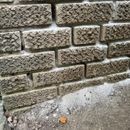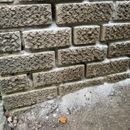Unexplained sudden mortar deterioration
A family member sent me these pictures from the exterior of his house in Ohio. The house is a little over 100 years old. You can see the mortar is seriously deteriorating. A ton of powder is at the base of the brick. It is near a downspout but covered by the roof overhang. I told him it needed to be repointed but he insists the mortar was fine last month. He walks by the area regularly. It appeared out of nowhere. He said nobody has been to work on the house, no seismic activity, etc. Normal freeze thaw cycle can do this but I’d expect it to happen more gradually.
Could any critter be responsible for this? Any ideas what the root cause is? I said type N mortar is probably best but I’m not 100% sure.
GBA Detail Library
A collection of one thousand construction details organized by climate and house part











Replies
I've been checking in now and then to see if anyone else had an answer, but here's a few thoughts based on a quick search, and some unprobable thought experiments.
If it's 'all of a sudden', then something must have changed. Mortar doesn't just hop off the bricks when nothing happened. So with that, here's a few scenarios I came up with.
1. Unbeknownst damage from wife/kids/siblings/others using some type of chemical spray to clean something. Nobody will own up to it, no matter the cost, eating away at the mortar silently, until the first rain comes to wash it out.
2. Insect damage from some form boring type insect, bees, termites, beetles, etc. Seems like a plausible case, as those droppings look like they're ejected from the holes to some degree. It's those small round holes that give it away, unless those were machine drilled to your knowledge.
3. Water damage that's finally coming to bear. Decades of efflorescence in that area may have weakened the mortar to a degree which it is easily damages, leading to #2 above, or plain old wind damage.
Do you know if it can be easily scraped away in other areas of the wall? Is the damage localized to just this region? Any evidence of pests around? Keep us updated if you actually find a cause.
Great tips @kbentley57. I've done some research and see that a type of bee (mortar bee) can burrow into mortar but the mortar has to be soft (likely damaged from water). I suspect this could be a case of clogged gutters causing splashback. The insects take advantage of the situation.
Evidence for insects: https://animals.mom.com/bees-burrow-mortar-8598.html
Evidence against insects: https://ask2.extension.org/kb/faq.php?id=587898
Any updates on the root cause of this?
I would guess freeze/thaw damage, possibly combined with other things. In my experience, freeze/thaw damage usually cause mortar to come out in chunks, but you can get some sandy material too if it breaks down enough. Sometimes it takes a while for the condition of the mortar to get bad enough to be as noticeable as it is in these pics though. Efflorescence could also be a contributor here, but that usually needs long term water exposure (such as water built up behind the masonry) to really become a large scale problem.
Note that freeze/thaw damage can open large fissures and holes that then let insects in, so you could have a combination problem here. If there are insects involved, you should be able to find some detritis from the insects, such as old carcasses or insect poo.
Bill